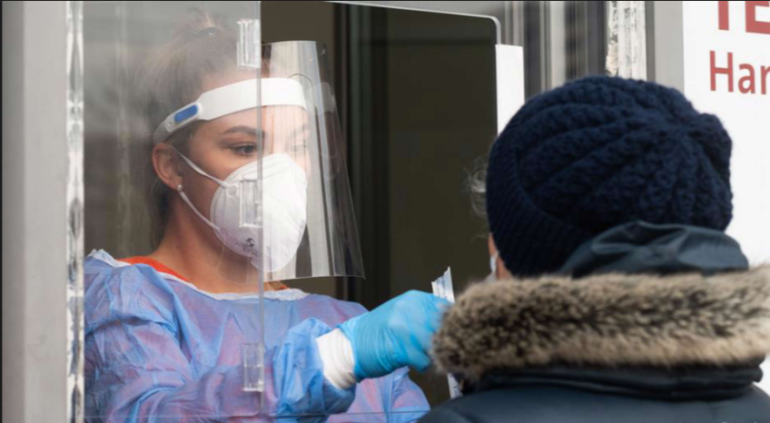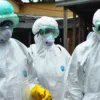Germany is sniffling and coughing again. Wastewater tests indicate that COVID-19 is more present than anytime since June 2022.
COVID-19 has lost much of its fearsome reputation. Most people in Germany are vaccinated or have otherwise built up a baseline immunity. Still, general practitioners like Lars Rettstadt are busy.
“It’s typical infection season again. There’s a lot of sniffling and coughing,” the doctor in Dortmund, a city in western Germany, said. “When we open the door on Monday morning, there are 70 people without an appointment: men, women, young and old.”
By his estimate, 80% of them have viral infections of some kind. Half of those are coronavirus.
Only severe cases left
Without a mask mandate, most patients don’t wear one. Rettstadt’s practice offers them for 50 cents. He has set aside an hour just for infection appointments. Patients can also reach him by video. PCR tests are reserved for those in particularly bad shape.
“We no longer see the severe cases,” he said, adding just one patient, aged 94, had to go to the hospital due to COVID-19.
Otherwise, symptoms reflect the regular wintry kind that keep people out of work to recover in bed at home. Yet sick days can go for as long as two weeks.
10% of country with respiratory infections
That means sickness might not be fatal, but it is causing massive disruptions. With as much as 10% of the country sick, according to Germany’s Robert Koch Institute for public health, offices and services are struggling to stay open. With the mix-and-mingle Christmas season coming up, Health Minister Karl Lauterbach has urged people to get their vaccinations topped up.
The official, 7-day incidence is at 38, which seems low in comparison to 2,000 during the Omicron wave in early 2022. Yet with testing sporadic, that number may be deceiving. A recent test of wastewater has shown more coronavirus in the water since this form of testing got underway in June 2022.
Other forms of PCR testing suggest a 7-day incidence of almost 3,900 in the western German state of Rhineland-Palatinate, the Frankfurt-based virologist Martin Stürmer said. That’s up from 2,600 one week ago.
“We are in a phase where the coronavirus figures are increasing massively,” Stürmer added.
Pirola variants on the rise
The coronavirus figures add to the flu and RSV cases. Yet these are not translating into a higher burden on hospitals and ICU wards, Stürmer said. Deaths are stable, as well.
Of the many variants out there now, the “JN.1 variant, another successor variant of Pirola, is now responsible for almost a third of cases.”
While the risk to the general population is low, Stürmer called on at-risk groups, including people over the age of 60, to get boosters. These add a layer of defense against so-called Long Covid. Masks could be sensible, too, although there is little public desire to go back to them.
“The willingness to be vaccinated is also certainly at a low level,” Stürmer said. “I think these are all factors that we could significantly improve with positive and meaningful communication.”
This article was originally written in German.


